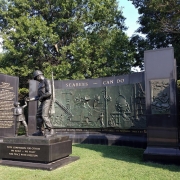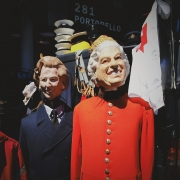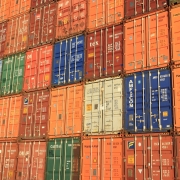Did the Korean War end in a stalemate?
Topic of Study [For H2 and H1 History Students]:
Paper 1: Understanding the Cold War (1945-1991)
Section A: Source-based Case Study
Theme I Chapter 2: A World Divided by the Cold War – Manifestations of the global Cold War: The Korean War (1950)
Historical context: A two-year stalemate
Following the North Korean invasion on 25 June 1950, the South Korean forces fought back with the support of the Americans. With the overwhelming military might of the USA, General MacArthur led the coalition force across the 38th parallel, entering North Korean territory on 7 October.
“You tell the boys that when they get to the Yalu (River) they are going home. I want to make good on my statement that they are going to eat Christmas dinner at home.”
An excerpt from the “Home by Christmas” statement by General MacArthur, 28 November 1950.
Instead, MacArthur had miscalculated as the Chinese troops entered the fray on 25 November, numbering nearly 200,000. Likewise, the opposing force had the backing of a superpower – the Soviet Union. As both sides suffered heavy casualties, MacArthur managed to repel the Chinese forces back to the 38th parallel in March 1951.
Notably, the hawkish general suggested to Truman the use of atomic bombs to defeat the Chinese forces. The terrifying notion of a nuclear holocaust had convinced Truman to pursue a ‘limited war’, such that his clashes with MacArthur ended with the general’s dismissal. Subsequently, General Matthew Ridgeway replaced MacArthur’s role.
In the simplest of terms, what we are doing in Korea is this: We are trying to prevent a third world war.
… So far, by fighting a limited war in Korea, we have prevented aggression from succeeding, and bringing on a general war. And the ability of the whole free world to resist Communist aggression has been greatly improved.
An excerpt from a radio report to the American people on Korea and on U.S. Policy in the Far East, 11 April 1951.
Rise of Ike: A push to end the war
After the US Presidential election in 1952, Dwight D. Eisenhower took a more aggressive stance than Truman, hinting the use of nuclear weapons to end the military stalemate in Korea. Meanwhile, People’s Republic of China (PRC) and North Korea were facing economic problems as the war dragged on, thus increasing their desires to sign a ceasefire agreement with the South.
What influenced China more was the devastating impact of the war. By summer 1952, the PRC faced huge domestic economic problems and likely decided to make peace once Truman left office. Major food shortages and physical devastation persuaded Pyongyang to favor an armistice even earlier.
… Also, by early 1953, both Washington and Beijing clearly wanted an armistice, having tired of the economic burdens, military losses, political and military constraints, worries about an expanded war, and pressure from allies and the world community to end the stalemated conflict.
An excerpt from “The Korean War 101: Causes, Course, and Conclusion of the Conflict” by James I. Matray, Education About Asia, Winter 2012.
On 27 July 1953, an armistice was signed, bringing the Korean War conflict to an end. In a radio and television broadcast to the American population, President Eisenhower expressed sorrow towards the tragedies that befell on the Korean people. He highlighted the brave acts of the Republic of Korea (South). As Korea remained divided, Eisenhower declared the the USA and the rest of the United Nations would pay close attention to any possible threats in the region.
In this struggle we have seen the United Nations meet the challenge of aggression–not with pathetic words of protest, but with deeds of decisive purpose. It is proper that we salute particularly the valorous armies of the Republic of Korea, for they have done even more than prove their right to freedom. Inspired by President Syngman Rhee, they have given an example of courage and patriotism which again demonstrates that men of the West and men of the East can fight and work and live together side by side in pursuit of a just and noble cause.
An excerpt from the radio and television address to the American people announcing the signing of the Korean Armistice, 26 July 1953.
Notably, US military involvement increased a year later after the First Taiwan Strait Crisis in August 1954, as evidenced by the signing of the Mutual Defense Treaty in December 1954.
What can we learn from this article?
Consider the following question:
– Assess the view that the USA had achieved victory in the Korean War.
Join our JC History Tuition to analyse the consequences of the Korean War. The H2 and H1 History Tuition feature online discussion and writing practices to enhance your knowledge application skills. Get useful study notes and clarify your doubts on the subject with the tutor. You can also follow our Telegram Channel to get useful updates.
We have other JC tuition classes, such as JC Math Tuition and JC Chemistry Tuition. For Secondary Tuition, we provide Secondary English Tuition, Secondary Math tuition, Secondary Chemistry Tuition, Social Studies Tuition, Geography, History Tuition and Secondary Economics Tuition. For Primary Tuition, we have Primary English, Math and Science Tuition. Call 9658 5789 to find out more.





